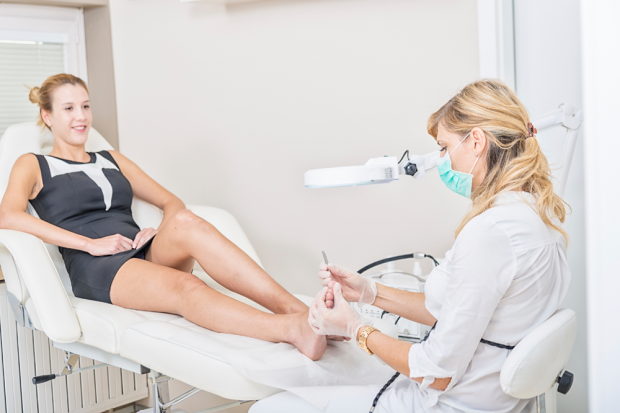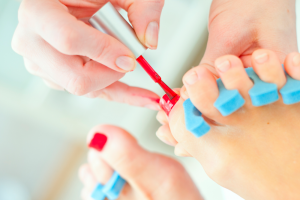Money Matters Advice: How Much Should I Tip My Pedicurist For A Pedicure?
Confused about tipping etiquette when it comes to pedicures? Find out exactly how much to tip for a pedicure with this handy gratuity guide.
Getting a pedicure should be a relaxing experience, and nothing zaps the fun out of the indulgent treat more than stressing about how much to tip before you leave the salon. Every establishment and pedicure procedure is different, which makes the tipping game all the more complex. But luckily, there seems to be a hard and fast rule that will leave you in the good graces of your pedicurist — and all the other service professionals who expect a little sumthin-sumthin for their efforts:
For all beauty services — including pedicures, manicures, haircuts, massages, etc. — tip 20% of the total cost.
When You Should Tip More, When You Should Tip Less
Some people may balk at the 20% tipping rule, but the majority of salon professionals across the country agree the sum is fair. However, it’s perfectly acceptable to sway from a concrete 20%, especially if the service was either exceptional or a really good deal (then err more to the 30% range) or less than exceptional (when it’s perfectly okay to give 15%). It’s also standard to tip more than 20% if you’re a repeat client.
But More Importantly: Give "Tips" To Future Customers!
In addition to a traditional monetary tip, consider giving tips in the form of advice to other customers via social media platforms like Facebook and Yelp. Good reviews on popular rating sites increases business for good pedicurists, and therefore the professionals make even more money from the new customers. That in and of itself is priceless. Similarly, if you had a bad experience, you can warn others and hopefully spur the salon or pedicurist to step up his or her game.
We hope these tips (wink, wink) help put you at ease so your next mani or pedi is the fully relaxing treat it’s supposed to be!
Notice concerning medical entries:
Articles having medical content shall serve exclusively for the purpose of general information. Such articles are not suitable for any (self-) diagnosis and treatment of individual illnesses and medical indications. In particular, they cannot substitute for the examination, advice, or treatment by a licensed physician or pharmacist. No replies to any individual questions shall be effected through the articles.





